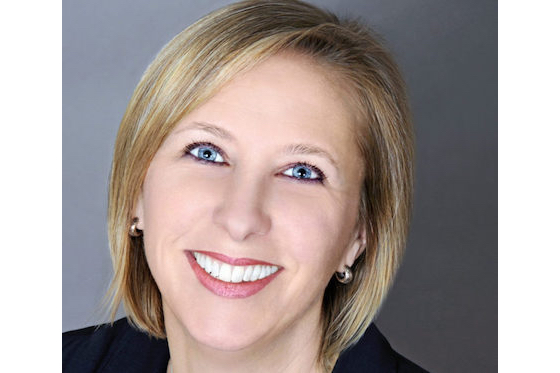Steering a firm with more than U.S.$5.5 billion in assets under management and a deep track record, HotelAVE CEO Michelle Russo has a firm grasp of both the big picture and the day-to-day details. She recently shared her perspective on how the owner-brand dynamic has evolved, best coping strategies for owners and how the operations landscape might look over the next few years.
HOTELS: Are brands doing a good job of helping owners manage operating costs?
MICHELLE RUSSO: Many brands have been relaxing and changing, and in some cases even eliminating, brand standards (such as daily housekeeping, on-site F&B, 24-hour room service, etc.), but not those which affect customer benefits (such as complimentary breakfast, extra points, etc.). Many brands also worked to secure reductions and/or deferrals on key vendor contracts during hotel closure periods (such as TV services).
Hilton also published full guidelines with cost reduction initiatives during COVID, including that hotels have the option to suspend minibars in room during the duration of the pandemic, remove lobby coffee service and suspend turndown service.
In addition, the majority of our brands are not paying bonuses in 2020. While 2020 is the most challenging year on record, and teams worked harder than any other period, it’s a bit tone deaf for an operator in this environment to ask an owner to come out of pocket to fund discretionary bonuses when owners have had to lay off a lot of associates and fund millions of operating shortfalls and debt service just to enable the hotel to survive.

H: Where else have you seen flexibility?
MR: Most brands have modified the fee calculation to be more aligned with revenue recovery (i.e., changing from a fixed to a variable calculation). Marriott, for example, is continuing fee relief through Q1 2021 with a program service fee reduction, which reduced the fixed cost by 50%.
Many brand initiatives that were scheduled to be implemented in 2020 have been pushed, such as Hilton’s Delphi implementation, which was extended to the end of 2021.
All brands have suspended quality audits and guest satisfaction scoring. In 2021, Marriott plans to bring back its QA program, with monthly self-audits and annual virtual visits for the majority of properties.
Most nonluxury operators have adopted no stayover cleaning service, which has helped mitigate the incremental cleaning and PPE costs of meeting the heightened cleaning and sanitation requirements that require extended time to clean a checkout room, for example.
H: How are brands supporting owners’ top-line efforts?
MR: In a collaborative effort with our management teams, many brands are targeting different types of base business that they wouldn’t normally go after to generate revenue. For example, we’ve seen a majority of major brands implement unique work from hotel programs, such as Hyatt’s Work from Hyatt initiative — offering discounts on longer stays with dedicated work space — or Hilton’s WorkSpace by Hilton, which offers day-use rooms.
Both Hilton and Marriott have easily accessible portals on their internal brand sites that are dedicated to COVID recovery. Both have published robust recovery sales and marketing toolkits. And retaining loyal customers (loyalty program members) has been a focus to ensure that once customers are ready to travel, they are able to continue to earn and use points.
Marriott changed to dynamic pricing for its key accounts in 2021 capped at the 2019 corporate negotiated rate. This was brilliant in that hopefully either we can continue with dynamic pricing throughout the recovery or, upon recovery, return to the 2019 corporate rates as the starting point for negotiations.
H: What survival strategies have had the biggest impact for owners?
MR: Some of the most effective efforts have included reducing/eliminating F&B, reduction in servicing guest rooms, labor cost reductions, elimination of third-party contracts and the combination of services — using lower-paid, high-performing staff to cover multiple job functions such as a banquet manager functioning as director of F&B, given the lower volume. Several brands have also modified their severance policies, making it more “affordable” to lay off associates with a severance payment instead of continuing to furlough an associate, which created uncertainty for both the associate and the hotel.
H: Where do you see operations adapting as travel rebounds?
MR: We can expect simpler F&B solutions in full-service hotels. The reality is that it is a necessity, but not a differentiator outside of the luxury space. There was also a trend pre-COVID to simplify outlet execution and/or replace outlets with more elaborate grab-and-go facilities. This may create some brand blur going forward, but owners will be resistant to reintroducing outlet operating losses back into the P&L post-COVID. We can also expect a spotlight on management labor and a greater emphasis on technology to replace transactional experiences.
Cross-training of managers and associates is hopefully here to stay. By cross-training staff and removing the middle layers, we are able to improve productivity and service while also increasing the autonomy of development of staff.
We expect to see larger numbers embrace technology, generating a push for increased automation of positions and tasks that can be modified to enable increased productivity and a better guest experience — for example, WiFi, virtual concierge, QR codes. We can also expect a reverse amenity creep, where hotels pull out all of the amenities and services that have been added with little concern for cost implications: in-room coffee, extra towels and robes, magazines, etc.
In luxury, service will become more old-world and less relaxed. Staff will need to learn to read guests more to determine whether a more standoffish/formal/distanced approach is required.
